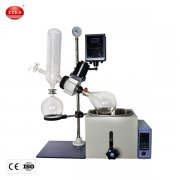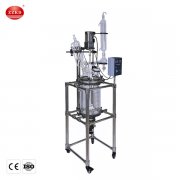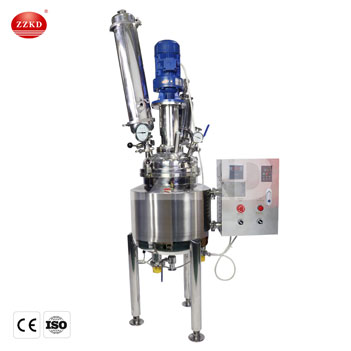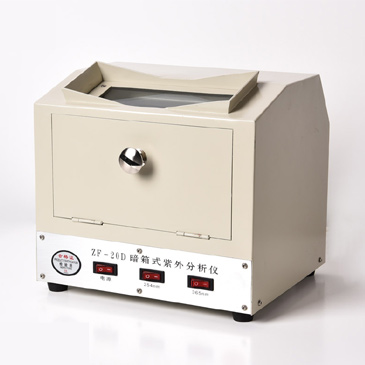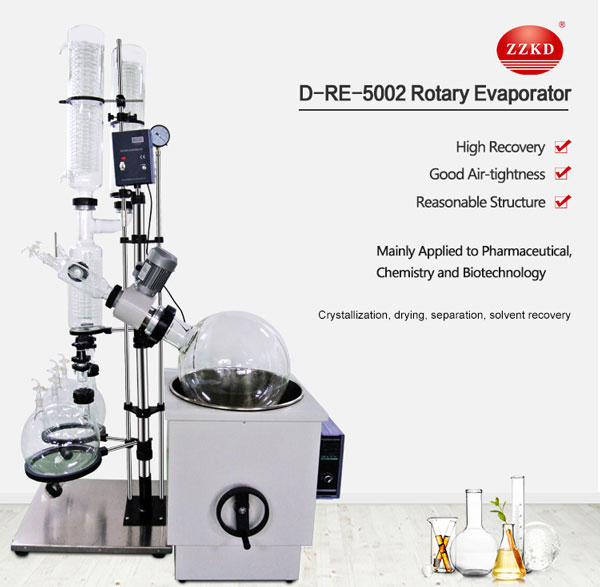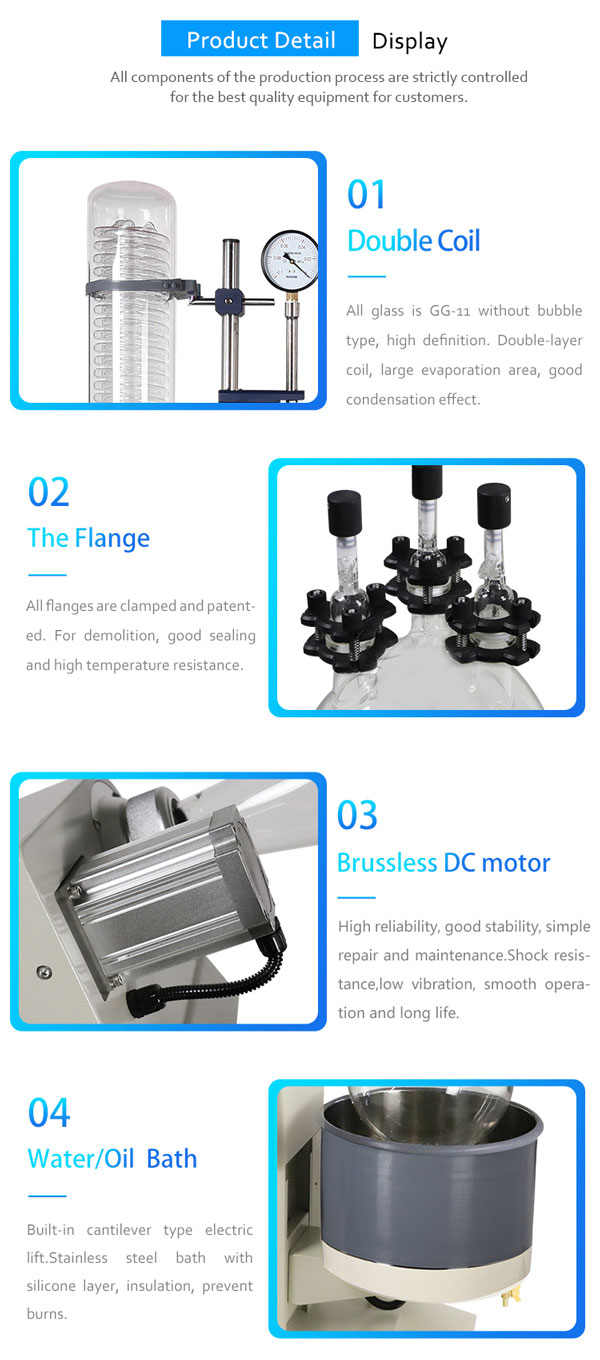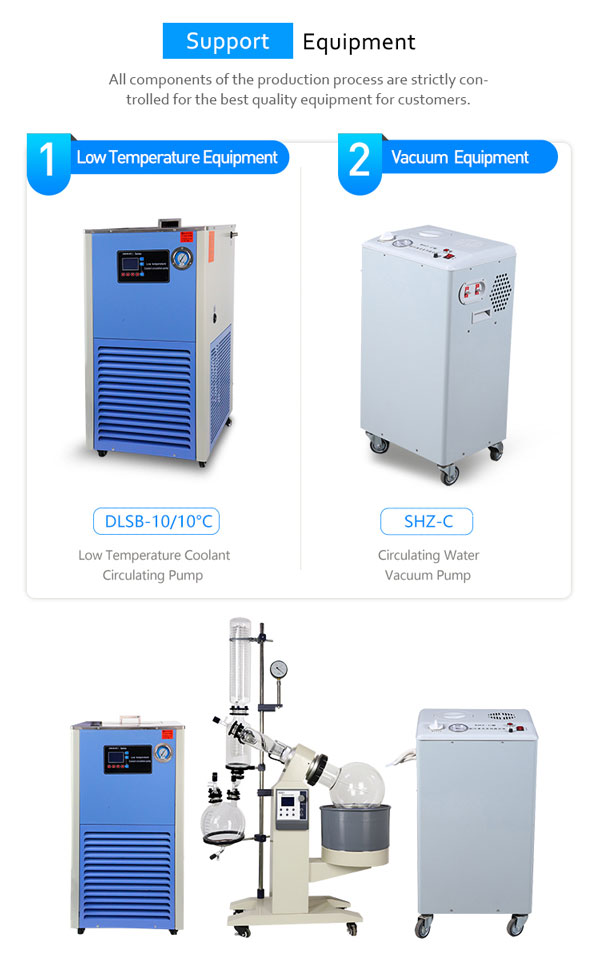What is a Rotovap?
Rotary evaporator, also known as rotary evaporator, is mainly used in sample pretreatment processes such as laboratories, food, and the environment. Its main role is to concentrate and switch solvents. It is mainly composed of: motor, distillation bottle, heating pot, condenser tube and other common laboratory equipment.
Evaporation process of rotary evaporator uses in laboratory
The working principle of rotary evaporation is simply to make the distillation flask rotate at a constant speed at the most suitable speed through motor control to increase the evaporation area. speed. Vacuum evaporator is used as a method of evaporation, because reducing the pressure above the liquid will reduce the boiling point of the component liquid, thereby speeding up the evaporation to a certain extent.
The evaporating flask is placed in a water bath for constant temperature heating and at the same time it is rotating itself, and the solution in the bottle is heated, diffused and evaporated under the negative pressure condition in the rotating flask. The evaporation system can be sealed and decompressed to 400 to 600 mm Hg. Heating the solvent in the distillation bottle with a heating bath can be heated to a temperature close to the boiling point of the solvent. At the same time, it can also be rotated at a speed of 50 to 160 rpm to make the solvent form a thin film. Increase the evaporation area, in addition, under the action of the high-efficiency condenser tube, the hot vapor can be quickly liquefied to speed up the distillation rate.
How to choose rotary evaporator uses in laboratory?
Before purchasing a rotary evaporator, you need to clarify some questions, such as how much is the distillation volume at one time, how many samples need to be distilled per day, what are the solvents to be distilled, what is the approximate boiling point range of the solvents, and whether these solvents are Flammable, explosive or toxic and harmful solvents. After determining the experimental requirements and the type of solvent to be distilled, you can start to choose a rotary evaporator. In fact, six questions need to be considered when choosing a rotary evaporator:
1. The core technology of rotary evaporator uses in laboratory
Under the corrosion of various solvents and in the state of motion, whether the system can maintain a high vacuum degree is the most important criterion for measuring the rotary evaporator. It is sealed with Teflon material and glass, which can withstand various solvents and has durable and reliable gas. Tightness, can maintain a high vacuum degree above -0.098MPa.
2. Factors affecting the efficiency of rotary evaporator uses in laboratory
For machines of the same specification, there are mainly: steam temperature, vacuum degree and cooling water temperature. Restricted by the heat resistance of certain materials, it is impossible to increase the steam temperature infinitely during work, so high vacuum and low cooling water temperature are the two main factors to improve efficiency.
3. The difference between vertical condenser and oblique condenser
Vertical condensers are gradually becoming popular because they take up less space. Large-capacity evaporators generally use vertical condensers, but there is no difference between the two instruments in essence.
4. Rotary evaporator uses in laboratory model selection
2L, 3L, 5L machines are suitable for laboratories and small sample tests; 5L, 10L, 20L are suitable for pilot tests; 20L, 50L are suitable for pilot tests and production, especially for the extraction of materials that need to avoid metal ion contamination.
5. Rotary evaporator uses in laboratory and other types of evaporators
The rotary evaporator has a small structure, compact and efficient, intuitive work, and no metal ion pollution. It is suitable for laboratory, production pilot test and extraction of precious materials, and its sealing performance is comparable to that of foreign machines.
6. Selection of vacuum pump
We recommend various solvent-resistant circulating water vacuum pumps, which can be vacuumed to -0.098MPa, and can meet various application requirements
Rotary evaporator uses in laboratory notice
(1) Preparation
After assembling the machine and connecting the cryopump and vacuum pump. (The vacuum tube of the vacuum pump is connected to the interface in the middle of the rotary evaporator condenser, and the silicone tube of the cryopump is connected to the interfaces on both sides of the condenser)
1. Turn on the power to the cryopump (cycle first, then refrigeration).
2. Turn on the vacuum pump, start vacuuming, and pay attention to the reading of the vacuum gauge. When the vacuum gauge maintains the maximum vacuum for a period of time, it indicates that the equipment is well sealed and can start feeding.
(2) Feeding
Feeding method: first pump the rotary evaporator into a negative pressure state, connect the feeding valve with the sample to be added with a hose, open the valve of the feeding valve, the sample will be directly pumped into the rotary bottle, and close the feeding valve after feeding valve. It is recommended to add no more than one-half of the spinner bottle each time.
(3) Operating the heating bath
1. Adjust the height of the heating bath so that the spinner bottle is placed in the water bath. Adjustment method: manual lifting, turn the screw on the heating bath, clockwise to descend, reverse to ascend.
2. Pour pure water into the bath, submerge 1/2 of the spinner bottle, just don't overflow.
3. Turn on the power supply of the heating bath. There is a power switch on the back of the heating bath controller. Push it upwards to turn it on, and the power indicator light will be on.
4. Set the temperature via the heating controller on the right side of the heating bath. Heating Controller Panel Instructions:
"SET" settings
"<" displacement
"v(down)" decreases
"^(up)" increase
"OUT" start heating indicator light
"AL1" Alarm indicator light 1
"AL2" Alarm indicator light 2
"SV" Set temperature display (°C)
"PV" current temperature display (°C)

 Products
Products





